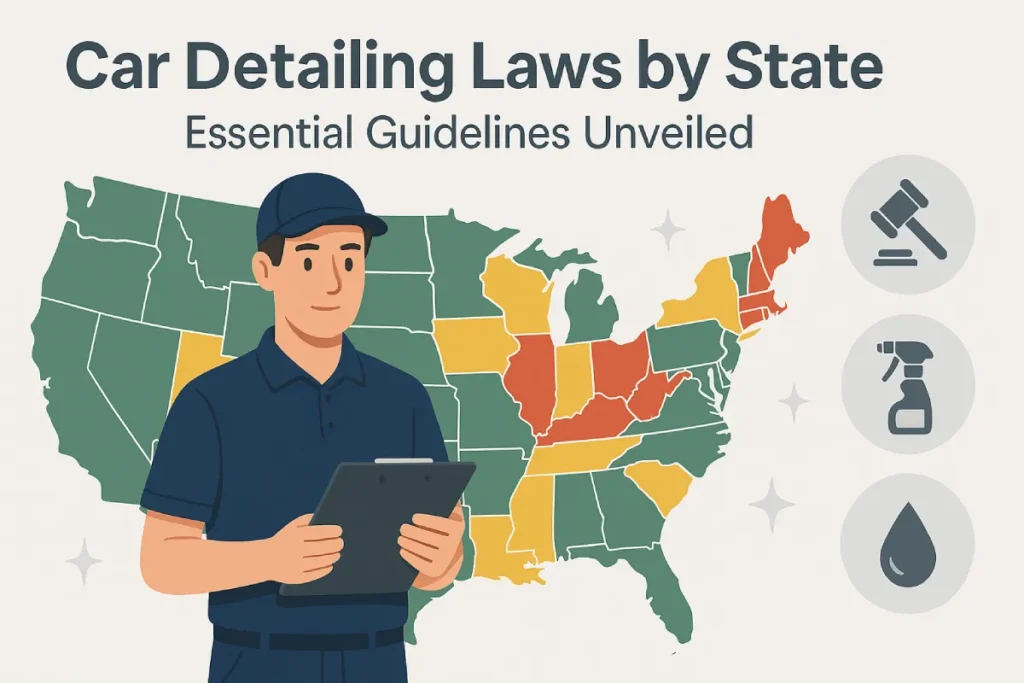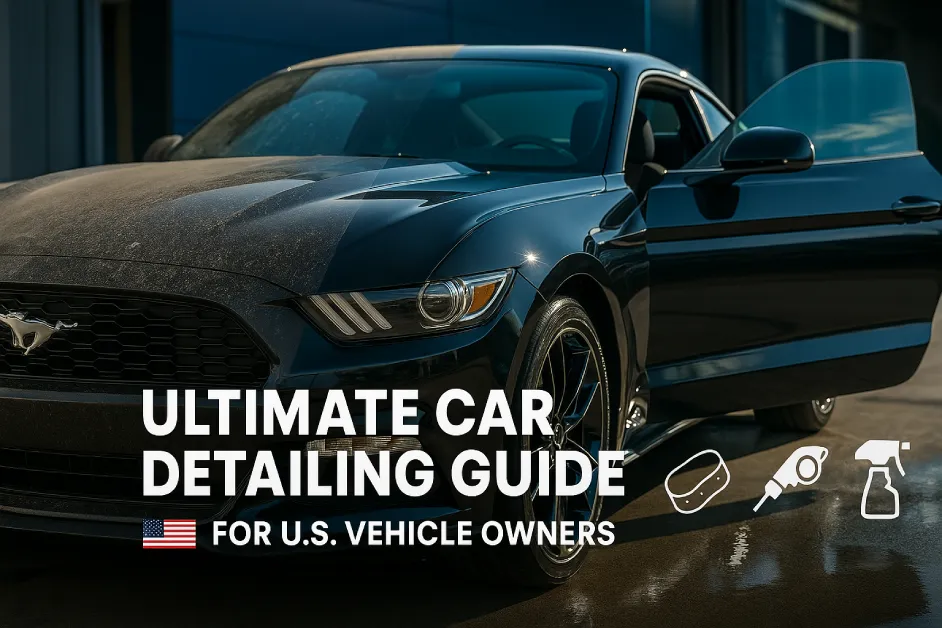Cleaning the undercarriage of your vehicle might not be the first thing on your to-do list, but it’s a crucial step in maintaining your car’s health and longevity. You might wonder why it’s so important, or even how to do it effectively.
Imagine driving with the peace of mind that your car isn’t silently suffering from rust or dirt build-up. It’s like giving your vehicle a spa treatment, ensuring it runs smoothly and stays in top shape for years to come. In this guide, you’ll discover simple steps on how to clean the undercarriage of your vehicle, saving you money on repairs and enhancing its performance.
Stick around, because the secret to a longer-lasting vehicle is just a few scrolls away.
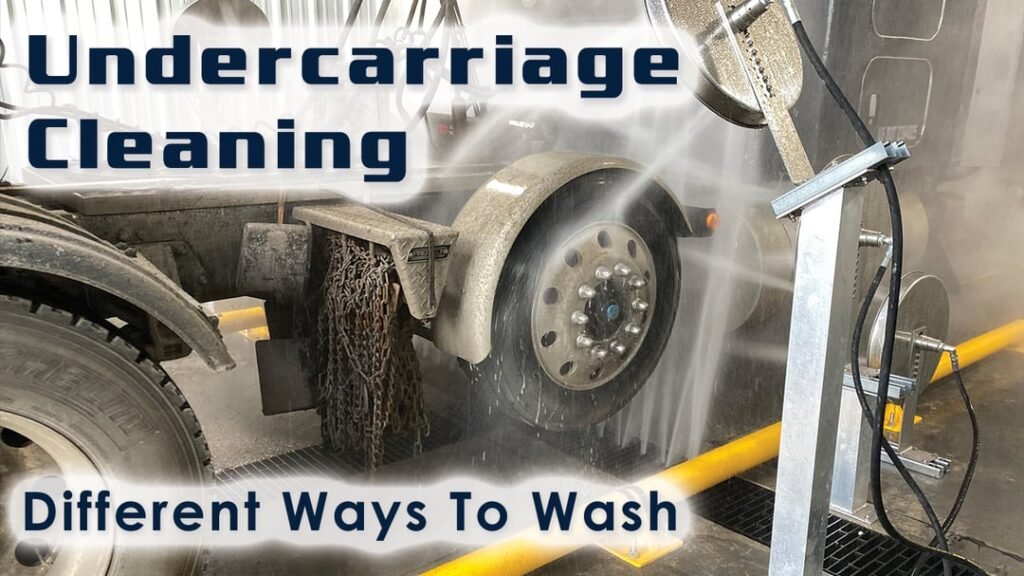
Credit: blog.hydrochemsystems.com
Preparation Steps
Begin by gathering necessary tools like a garden hose, a sturdy brush, and a quality cleaning solution. Ensure your vehicle is parked safely and securely on a flat surface. Disconnect any electrical components that might get damaged during cleaning.
Cleaning your vehicle’s undercarriage might seem like a daunting task, but with the right preparation, it can become a straightforward and rewarding process. Proper preparation not only ensures a thorough clean but also helps protect your vehicle from potential damage. Before you dive into the cleaning process, it’s important to focus on some crucial preparation steps. These steps will set the stage for an efficient and effective undercarriage cleaning.
Gather Necessary Tools
Start by collecting the essential tools you’ll need. A sturdy jack and jack stands are crucial for lifting your vehicle safely. You’ll also need a high-pressure hose or a pressure washer to tackle stubborn dirt and grime. A long-handled brush can help reach those tricky spots. Consider having a bucket, sponges, and a microfiber cloth on hand. The right tools make the job easier and more efficient. Have you ever tried cleaning without the right tools? It can be frustrating and time-consuming.
Choose The Right Cleaning Products
Selecting the right cleaning products is key to protecting your vehicle’s surfaces. Opt for a degreaser specifically designed for automotive use, as it will effectively break down oil and grime. Avoid harsh chemicals that could damage rubber components. A mild detergent can work wonders for general cleaning, leaving your vehicle’s underbelly fresh and residue-free. Checking product labels for compatibility with your vehicle’s materials is always a good idea. Remember, the wrong product can do more harm than good.
Safety Precautions
Safety should never be an afterthought when cleaning your vehicle’s undercarriage. Ensure your car is on a stable, flat surface before raising it. Always use jack stands, not just the jack, to secure your vehicle. Wear protective gear such as gloves and safety goggles to shield yourself from splashes and debris. Keep a first aid kit nearby in case of minor accidents. Isn’t it better to be safe than sorry? Taking these precautions can prevent potential injuries and give you peace of mind. Preparing for an undercarriage clean is all about having the right tools, products, and a focus on safety. By following these preparation steps, you’ll set yourself up for success and ensure your vehicle is in tip-top shape. Ready to give your vehicle the care it deserves?
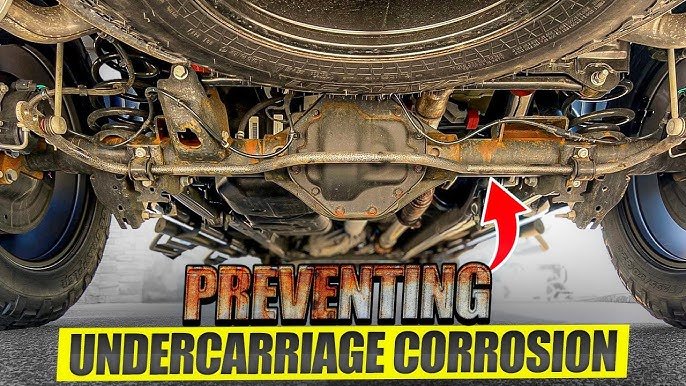
Credit: www.youtube.com
Lifting The Vehicle
Lifting your vehicle safely is essential for cleaning its undercarriage effectively. Use a sturdy jack and secure stands to elevate the car. This allows for thorough washing, removing dirt and grime that can lead to rust.
Cleaning the undercarriage of your vehicle may seem like a daunting task, but it’s essential for maintaining your car’s health and performance. To do this job effectively, you must first lift the vehicle safely. Proper lifting ensures you can access all those hidden spots without any risk. Let’s delve into the steps involved in lifting your vehicle safely.
Selecting The Proper Lifting Equipment
Choosing the right equipment is crucial. You can use a hydraulic jack or car ramps. Hydraulic jacks are handy and portable, while ramps provide more stability. Consider your workspace and the type of vehicle you have. If you’re working in a tight garage, a jack might be easier to maneuver. On the other hand, ramps are excellent for larger vehicles like SUVs. Make sure the equipment can handle your vehicle’s weight. Check the weight capacity of the jack or ramp before you begin. Using inadequate equipment can lead to accidents or damage.
Ensuring Vehicle Stability
Once you’ve lifted the vehicle, stability is key. No one wants a car to wobble while cleaning underneath. Always use jack stands if you’re lifting with a hydraulic jack. These stands provide additional support and ensure the vehicle doesn’t drop unexpectedly. Double-check the placement of the jack or ramps. Make sure they are positioned on solid ground. Uneven surfaces can cause instability, posing a risk to you and your vehicle. It’s also wise to give the vehicle a gentle shake once it’s lifted. This confirms that the setup is secure and won’t shift as you work. Safety should always be your top priority. Have you ever found yourself in a tricky spot while trying to clean your car’s undercarriage? Share your experiences and tips in the comments below. Your insights might just help someone else tackle this task with confidence.
Removing Debris
Cleaning the undercarriage of your vehicle is essential for its longevity. The undercarriage often collects debris, dirt, and grime. These materials can cause rust and damage if not removed. Understanding how to effectively remove debris is crucial. This process will keep your vehicle running smoothly.
Using A Pressure Washer
A pressure washer is a powerful tool for cleaning. It blasts away dirt and grime quickly. Position the nozzle at least 12 inches from the surface. This prevents damage to delicate parts. Use a sweeping motion to cover the entire area. Ensure you reach all the nooks and crannies. Adjust the pressure settings for stubborn debris.
Choose a washer with adjustable pressure settings. This feature gives more control. Use warm water for better results. It loosens tough dirt faster. Check the owner’s manual for specific instructions. It ensures safe and effective cleaning. Regular use prevents buildup over time.
Manual Debris Removal Techniques
Manual techniques require more effort but can be effective. Use a scrub brush for stuck dirt. Choose a brush with stiff bristles. This helps to dislodge stubborn debris. Wear gloves for protection and grip. Work in sections for thorough cleaning.
A hose can also be useful. It washes away loose debris. Combine with scrubbing for best results. A sponge can reach tight spots. This method is gentle on sensitive areas. Inspect the undercarriage regularly. It helps identify areas needing extra attention.
Use a flashlight for better visibility. It highlights hidden debris. Clean during the day for natural light. This makes the process easier. Regular cleaning reduces the risk of rust. It prolongs the life of your vehicle. Consistent care leads to better performance.
Applying Cleaning Solutions
Cleaning the undercarriage of your vehicle helps prevent rust and buildup. Use a hose to rinse dirt away. Apply a cleaning solution to dissolve stubborn grime. Scrub gently with a brush for a thorough clean. Rinse again and let it dry to maintain your car’s longevity.
Cleaning the undercarriage of your vehicle is crucial for maintaining its longevity and performance. One of the most effective steps is applying the right cleaning solutions. But how do you choose the best products, and what’s the best way to apply them?
Types Of Cleaning Agents
Several types of cleaning agents can make this task easier. Degreasers are powerful solutions that break down tough grime and oil. They’re perfect for vehicles that regularly drive on dusty or muddy roads. All-purpose cleaners are another option. They’re less potent than degreasers but work well for regular maintenance. If your car isn’t too dirty, these may be a good choice. Eco-friendly solutions are also available. They’re a great choice if you’re looking to reduce your environmental impact. They clean effectively without harsh chemicals.
Application Methods
Once you’ve chosen the right cleaning agent, it’s time to apply it. A spray bottle can help you reach all the nooks and crannies. It allows for even distribution of the cleaner. Using a brush can be effective for scrubbing away stubborn dirt. Choose one with stiff bristles for the best results. This technique adds a personal touch to your cleaning process. Have you ever considered using a pressure washer? It’s excellent for removing accumulated dirt quickly. Just make sure to keep the nozzle at a safe distance to avoid any damage. What’s your preferred method? Each has its own benefits, and experimenting can help you discover the most effective way to keep your undercarriage clean.
Scrubbing And Rinsing
Cleaning the undercarriage of your vehicle can seem tricky. Scrubbing and rinsing play a crucial role in this task. Both steps ensure that dirt and grime don’t harm your vehicle. Let’s dive into the details.
Effective Scrubbing Techniques
Start with a sturdy brush designed for cars. A long handle helps reach tough spots. Use a mild detergent to avoid damaging metal parts. Work in sections to focus on specific areas. Begin scrubbing from the back towards the front. This method ensures all dirt flows away. Apply gentle pressure to remove stubborn grime. Avoid harsh scrubbing to prevent scratches.
Rinsing Off Residue
After scrubbing, rinse thoroughly with water. A garden hose with a spray nozzle works best. Begin rinsing from the top. This allows water to carry dirt downwards. Ensure all soap and dirt are washed away. Check for any leftover residue. Repeat rinsing if necessary. A final rinse ensures a clean and safe undercarriage.
Drying The Undercarriage
Drying the undercarriage of your vehicle might seem like a minor step, but it plays a crucial role in maintaining the health of your car. After a thorough cleaning, you don’t want leftover moisture to cause rust or other damage. Understanding the best drying methods can save you time and protect your investment. Let’s delve into two effective techniques: air drying and towel drying.
Air Drying Vs. Towel Drying
Air Drying: This method is simple and effective, especially if you live in a sunny or windy area. Just park your vehicle in a spot where air can freely circulate underneath. Nature does the work, and you avoid the hassle of manual labor. However, air drying can be slower and less effective in humid conditions. Are you patient enough to wait for nature’s pace?
Towel Drying: If time is of the essence, grab a few microfiber towels. They are perfect for absorbing water without scratching surfaces. Get under your vehicle and wipe down areas where water may accumulate. This method gives you control, ensuring no moisture is left behind. It’s more labor-intensive but guarantees a thorough dry.
Preventing Rust Formation
Rust is the enemy of your vehicle’s undercarriage. Once it starts, it spreads quickly, compromising structural integrity. By thoroughly drying the undercarriage, you remove the moisture that encourages rust. Consider using a rust inhibitor spray after drying to add an extra layer of protection.
Think of this: every drop of water left behind can potentially start a rust spot. Would you prefer a few minutes of effort now, or costly repairs down the road?
Pay attention to spots where water is likely to pool, such as around joints and bolts. Regularly drying and applying rust prevention can keep your vehicle in top shape for years.
Remember, the key is consistency. Make drying the undercarriage a habit, especially after driving through puddles or washing your car. Your vehicle will thank you with longevity and reliability.
Inspecting For Damage
Inspecting for damage is crucial after cleaning your vehicle’s undercarriage. This step helps ensure your vehicle remains in good condition. Damage can affect your car’s performance and safety. Regular inspections can prevent costly repairs. Knowing what to look for is essential.
Identifying Common Undercarriage Issues
Rust is a common undercarriage issue. It weakens metal parts over time. Check for rusty spots or flakes. Bent or broken components can also be a problem. Look for any twisted or displaced parts. Fluid leaks are another concern. Pay attention to any wet or oily areas. These signs could indicate serious problems.
When To Seek Professional Help
Some issues require expert attention. If rust covers large areas, contact a professional. Bent parts may need repair or replacement. Leaking fluids can signal a major problem. Professionals can diagnose and fix these issues. They have the tools and knowledge. Seeking help ensures your car remains safe and reliable.
Protective Coatings
Protective coatings for your vehicle’s undercarriage offer vital defense against harsh elements. These coatings can prevent rust, corrosion, and damage from road debris. By applying protective coatings, you can extend the lifespan of your vehicle. This simple step is crucial for maintaining your car’s performance and appearance.
Benefits Of Undercoating
Undercoating creates a barrier against moisture and salt. It helps to reduce rust formation on metal parts. This protective layer also absorbs impacts from rocks and debris. Undercoating can make cleaning the undercarriage easier by repelling dirt. It also contributes to quieter rides by dampening noise from the road.
Application Techniques
Several methods exist for applying undercoating. Spray-on techniques are popular for their ease and effectiveness. Ensure thorough coverage of all exposed areas. Professionals often use specialized equipment for application. DIY kits can also be used for smaller projects at home. It’s important to clean the undercarriage before applying any coating.
Maintenance Tips
Cleaning your vehicle’s undercarriage prevents rust and keeps it running smoothly. Use a hose to remove dirt and debris. Ensure all areas are rinsed thoroughly, especially after driving through salt or mud. Regular cleaning extends the life of your vehicle.
Maintaining the undercarriage of your vehicle is not just about keeping it looking good; it plays a critical role in prolonging the life of your car. Dust, dirt, and road salt can accumulate and lead to corrosion if left unattended. By following some simple maintenance tips, you can ensure your vehicle remains in top condition.
Regular Cleaning Schedule
Adopting a regular cleaning schedule for your vehicle’s undercarriage is essential. Aim to clean it every month, especially if you frequently drive on dirt roads or in areas with high pollution. A routine wash helps prevent the build-up of harmful substances that can lead to rust. Use a hose or a pressure washer to reach all the nooks and crannies. Pay special attention to areas around the wheels and exhaust system. You might be surprised how much dirt hides in those spots.
Seasonal Considerations
Different seasons bring different challenges to your vehicle’s undercarriage. During winter, road salt is a major concern. Salt accelerates rusting, so it’s crucial to rinse the undercarriage more frequently. Spring is an excellent time to do a deep clean. Remove any residues left by winter roads. It’s like giving your car a fresh start for the warmer months. Have you ever noticed how much mud and grime accumulate during the rainy season? Regular cleaning can prevent these from hardening and causing damage. Consider checking your undercarriage more often during heavy rain periods. Taking the time to maintain your vehicle’s undercarriage can save you money in the long run. What steps will you take to protect your investment?
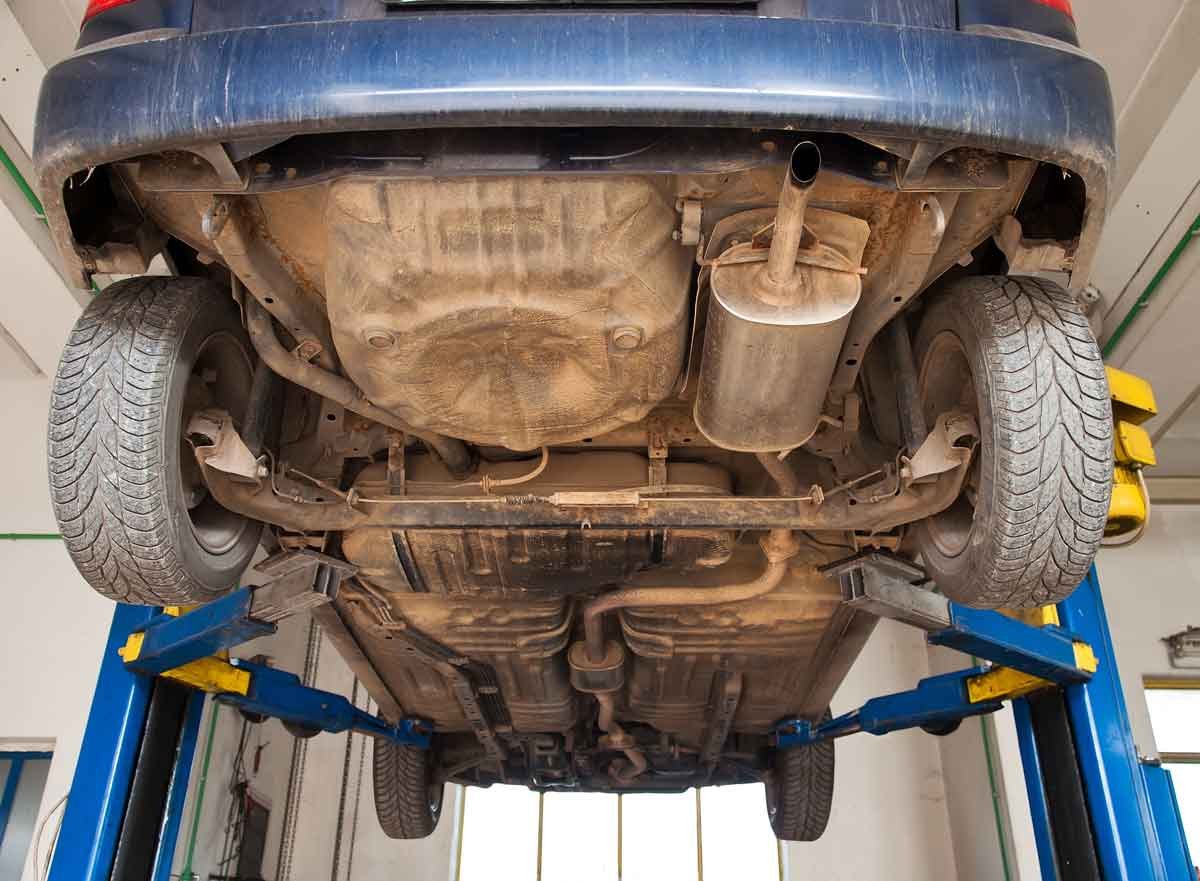
Credit: touchlesscarwash.com
Frequently Asked Questions
What To Use To Clean The Undercarriage Of A Car?
Use a pressure washer to remove dirt from the car’s undercarriage. Apply a degreaser for stubborn grime. Scrub with a brush for thorough cleaning. Rinse well and dry to prevent rust. Regular maintenance ensures longevity and performance.
How To Make An Undercarriage Look New?
Clean the undercarriage using a pressure washer to remove dirt. Apply rust remover and spray with a protective coating. Regularly check and maintain for rust and damage. Use high-quality products for a lasting finish. Keep it dry and clean for a fresh appearance.
Does Driving In Rain Clean The Undercarriage?
Driving in the rain can help rinse off loose dirt from the undercarriage. Rainwater lacks pressure to deeply clean. Regular maintenance is essential for thorough cleaning.
Are Underbody Car Washes Worth It?
Underbody car washes are worth it to prevent rust and corrosion, especially in areas with salted roads. Regular cleaning protects vital components, ensuring longevity and performance. Investing in underbody care saves money on repairs. Prioritize it during harsh weather conditions or after off-road adventures.
Keep your vehicle in optimal condition.
Conclusion
Keeping your vehicle’s undercarriage clean is essential. It prevents rust and damage. Regular cleaning keeps your car running smoothly. Gather necessary tools and materials first. Use a hose to rinse dirt away. Apply an appropriate cleaner for tough grime. Scrub gently with a brush.
Rinse thoroughly to remove all residue. Ensure the undercarriage is dry afterwards. A clean undercarriage enhances vehicle performance. It also extends the car’s lifespan. Make cleaning a routine habit. Your car will thank you. Happy driving!











